Our Solar System
Visit our neighbours and find out about the planets that share our solar system.
Is our solar system the only one in the universe?
The planets of our solar system all orbit round a small yellow star that we call the sun.
Up until relatively recently it was impossible to detect whether planets existed around other stars. If they did exist theses planets would be lost in the glare of the star they orbited and would be invisible to earth bound observations. So astronomers looked for other ways of detecting these planets. They looked for wobbling.
As planets orbit round their star, they cause the star to wobble. Astronomers started to to examine single stars like our own to see if they were wobbling. The results pointed to the fact that a number of these stars did in fact have their own solar systems. As observations have improved and many more solar systems have been discovered, the intriguing question is, can any of the planets in these solar systems support life like our own planet earth?
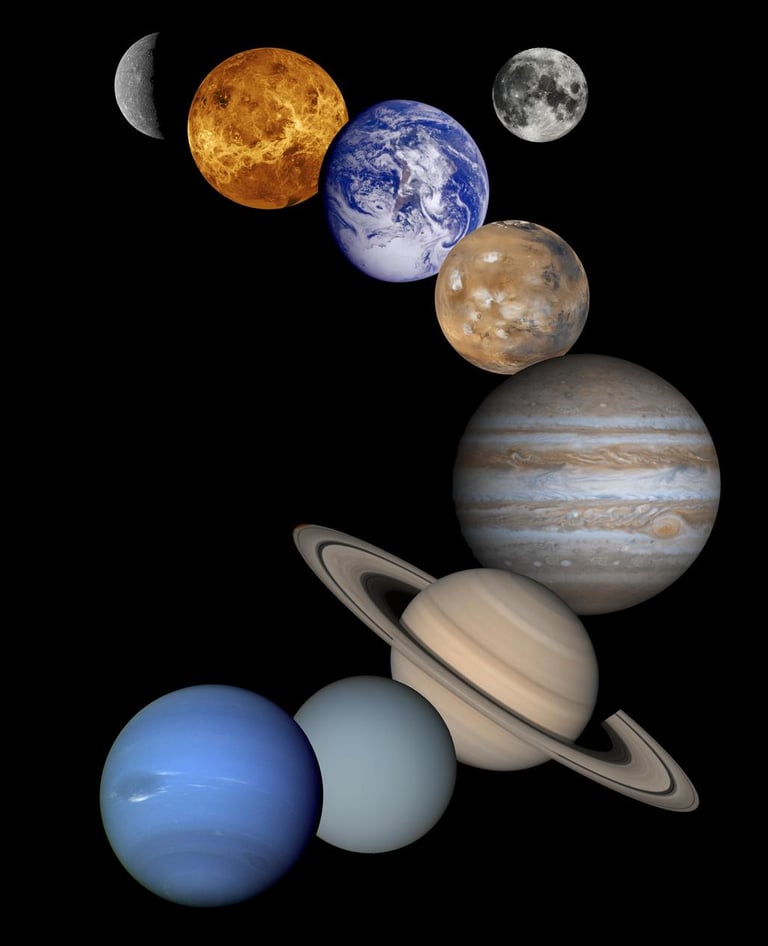

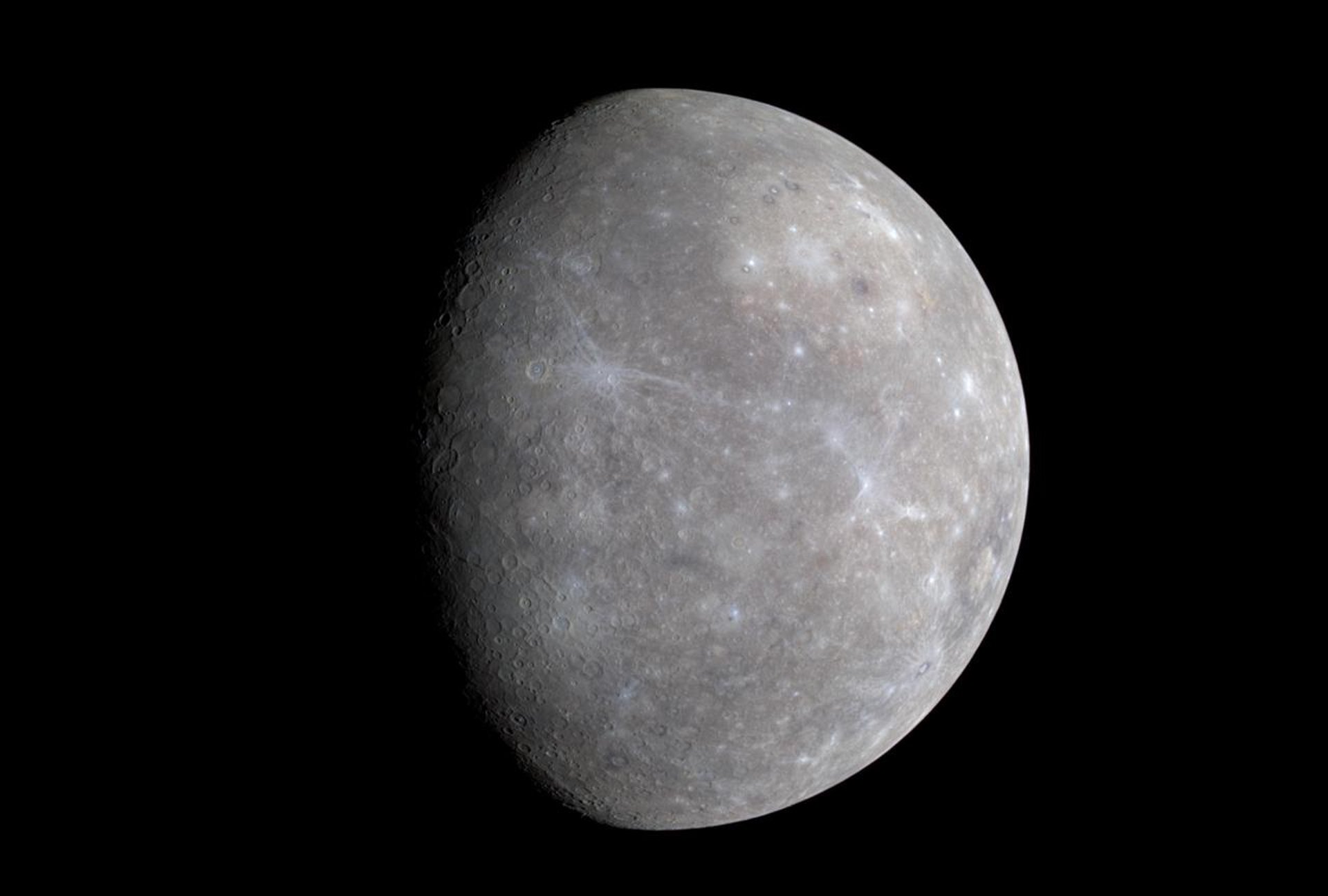
Mercury
Mercury was known to the Romans as the messenger to the gods.
It is the closest planet to the sun and hurtles round our star every 88 days. Since Pluto was declassified as a planet, Mercury is now the smallest planet in the solar system. Mercury has an iron core that extends three quarters of the way to its surface. This suggests that at one time Mercury was considerably larger. It appears that a hefty blow from a stray object in its distant past may have blown much of its original rocky shell off into space. This is not the only scar Mercury displays from major collisions. The Caloris Basin is one of the largest impact craters in the solar system. At 800 miles across it is bigger than the British Isles. The impact was so great that the shock waves created rocky ridges on the other side of the planet.
Although the Mercurian year is very short, the days (and nights) drag on. Mercury spins on its axis quite slowly and only fits in one and a half days to its year. If you were to visit the planet you would have to suffer interminably long nights where the temperature drops to -280 degrees Fahrenheit. At dawn the temperature would quickly soar and as the huge sun edged its way across the sky the barren landscape would heat up to 800 degrees fahrenheit.
A visitor to the planet would also witness some of the most peculiar sunsets in the solar system.
Sometimes Mercury's rapid motion round the sun outpaces it's genteel rotation. If this happens at sunset, the sun will dip below the horizon then pop back up again for a couple of days before sinking back down again plunging you into the long cold night.
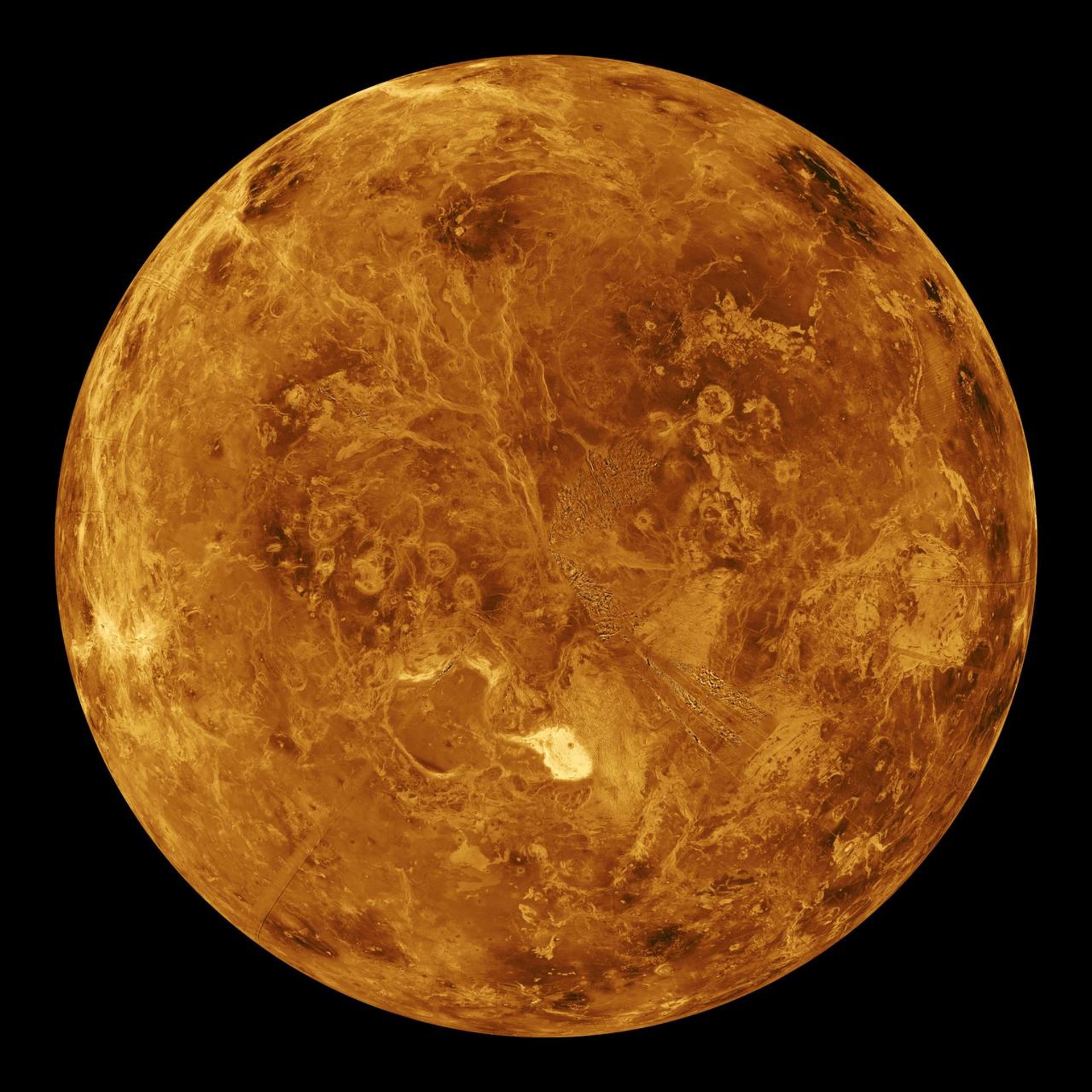
Venus
Venus is the second closest planet to the sun.
Viewed from earth it is the brightest of the planets. In fact if you know where to look it is possible to see it in broad daylight. At night it is bright enough to cast shadows. It's brightness is due to two things. Firstly it is quite close to earth compared to the other planets. Secondly it is highly reflective and a lot of sunlight bounces off the planet.Venus was once thought to be a tropical planet rich in vegetation. It was difficult to find out what the surface of Venus was like because it was always covered in cloud.
In the 1970s American and Russian probes were sent through the clouds to measure surface temperature and analyse the atmosphere. None of these probes lasted very long and the reasons soon became clear. The temperature at ground level was 840 degrees fahrenheit, the atmospheric pressure was 90 times that of earth and the atmosphere was highly corrosive. Basically if you send a probe to Venus it will either melt, be crushed or rust. Not somewhere you would want to park your car!
The extremely high temperatures on Venus seem to have been caused by the high quantities of carbon dioxide in the atmosphere which has led to the greenhouse effect, so an understanding of our sister planet could have profound importance for the future of our own.
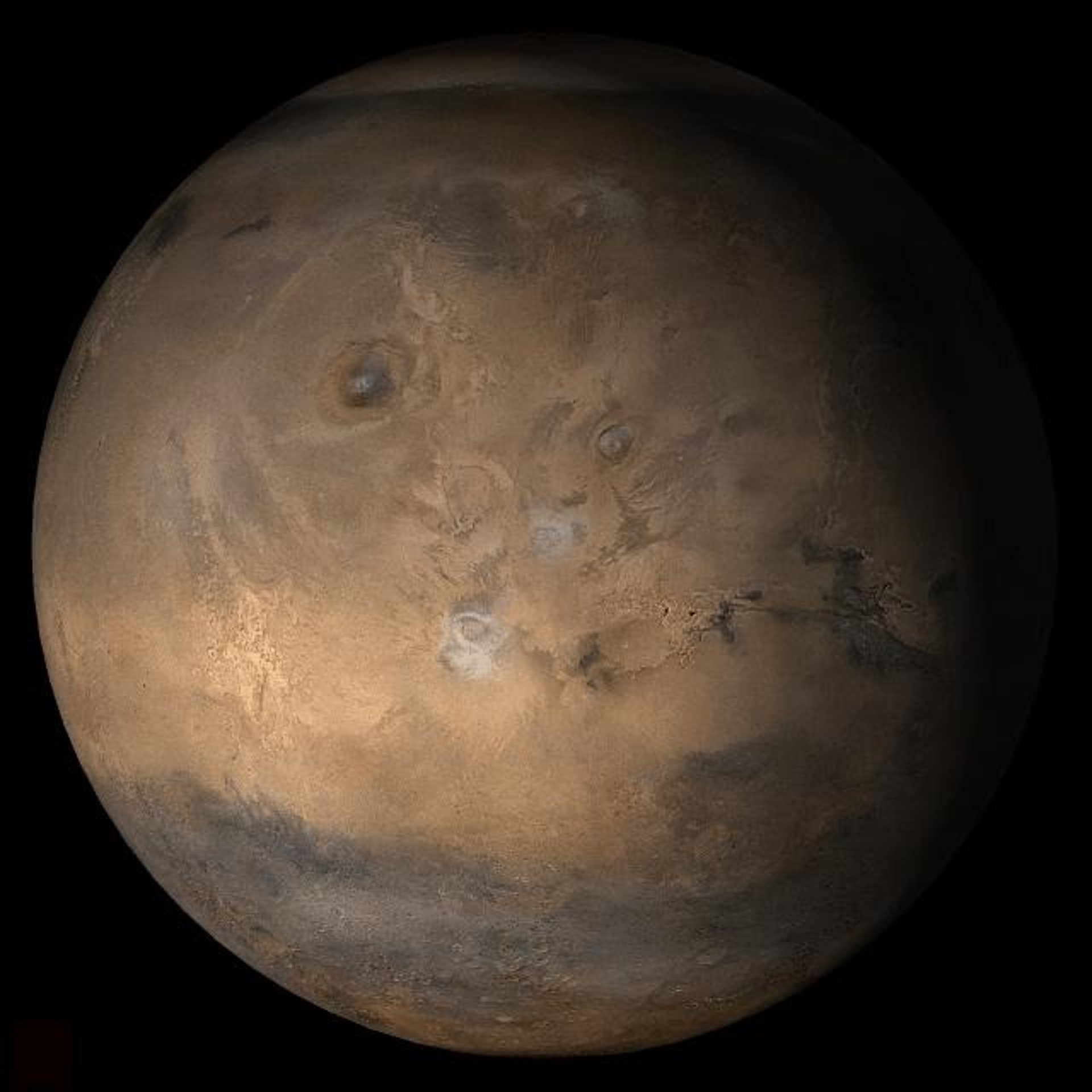
Mars
Mars is the last of the rocky inner planets. When seen in the night's sky Mars has a reddish colour and to the Romans this fiery planet was the bringer of war.
Mars has probably caught the human imagination more than any other planet. In the 1870s it was incorrectly reported that canals had been observed on the Martian surface. Since then there has been much speculation about life on Mars. Although the canals never existed, Mars does have some interesting natural surface features. The reddish appearance of Mars is caused by red dust scattered across the Martian surface.
Winds sometimes whip up this dust and the entire planet can sometimes be enveloped in a red dust storm.
Ironically, it was during one of these storms, that astronomers found some of the most prominent features of Mars.
When the Mariner 9 space probe orbited Mars in 1971, the planet was in the midst of a large storm. As the storm subsided, several holes appeared in the dust clouds. Scientists realized that they were looking at several huge volcanoes.
The largest of these volcanoes is Olympus Mons. At 15 miles high it is nearly three times the height of Everest and comparable in area to the size of Poland.
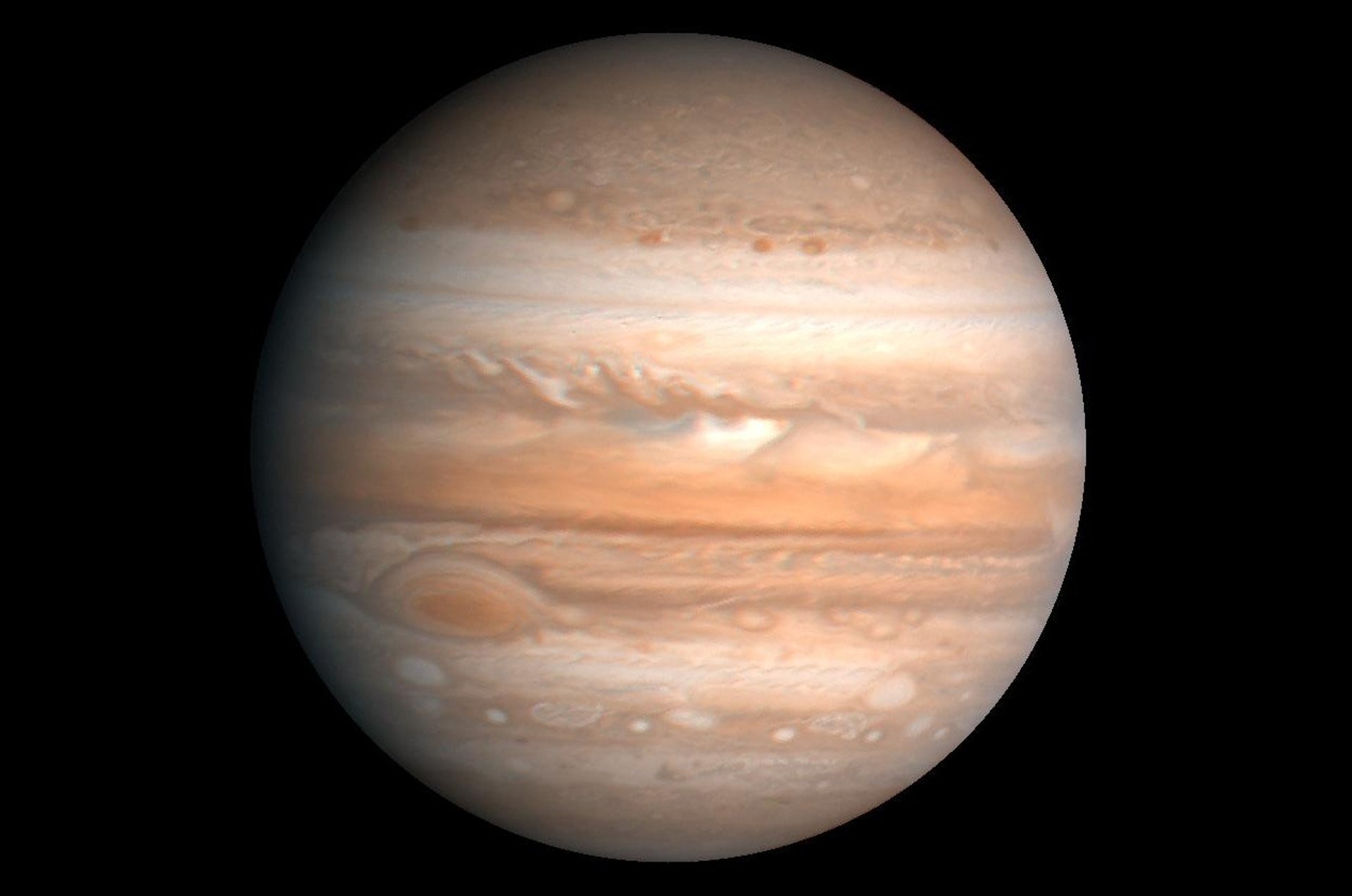
Jupiter
Jupiter is the giant of the solar system. Its mass is over two times that of all the other planets, moons, asteroids and comets put together.
All the inner planets (Mercury, Venus, Earth and Mars) are largely made of rock. Jupiter is the first of the gas giants. It mainly consists of hydrogen and helium. Unlike the inner planets Jupiter doesn't have a surface as such, just layers of cloud held together by the planet's gravity. When viewed through a small telescope it is possible to see dark stripes running parallel to Jupiter's equator. These are caused by different belts of cloud in the Jovian atmosphere.
In a larger telescope, the Great Red Spot can be seen. This was first spotted by Giovanni Cassini in 1665 and appears to be a vast storm that has been raging on Jupiter for hundreds of years.
When looking at Jupiter through binoculars, it should be possible to see one or more of the Galilean moons. Discovered by Galileo in 1610 they are the four largest of Jupiter's satellites.
The smallest is Europa, which is slightly smaller than our own moon. Io is bigger than our moon and Ganymede and Callisto are both bigger than the planet Mercury.
Astronomers are particularly interested in Europa because underneath Europa's icy surface there appears to be evidence of a warmer salty ocean. If this is the case then Europa could be our best chance of finding extra terrestrial life.
Observing Jupiter
With the unaided eye Jupiter appears as a very bright star.
With binoculars it should be possible to see one or more of Jupiter's largest four moons strung out along its axis.
Viewed through a telescope you should be able to see the equatorial belts quite clearly.
All the Galilean moons can be seen (providing they are not hidden by the planet). If one of the moons is moving across the front of the planet (called a transit), this may also be visible in a small telescope. The times of transits and the positions of the moons can be found in various astronomy magazines.
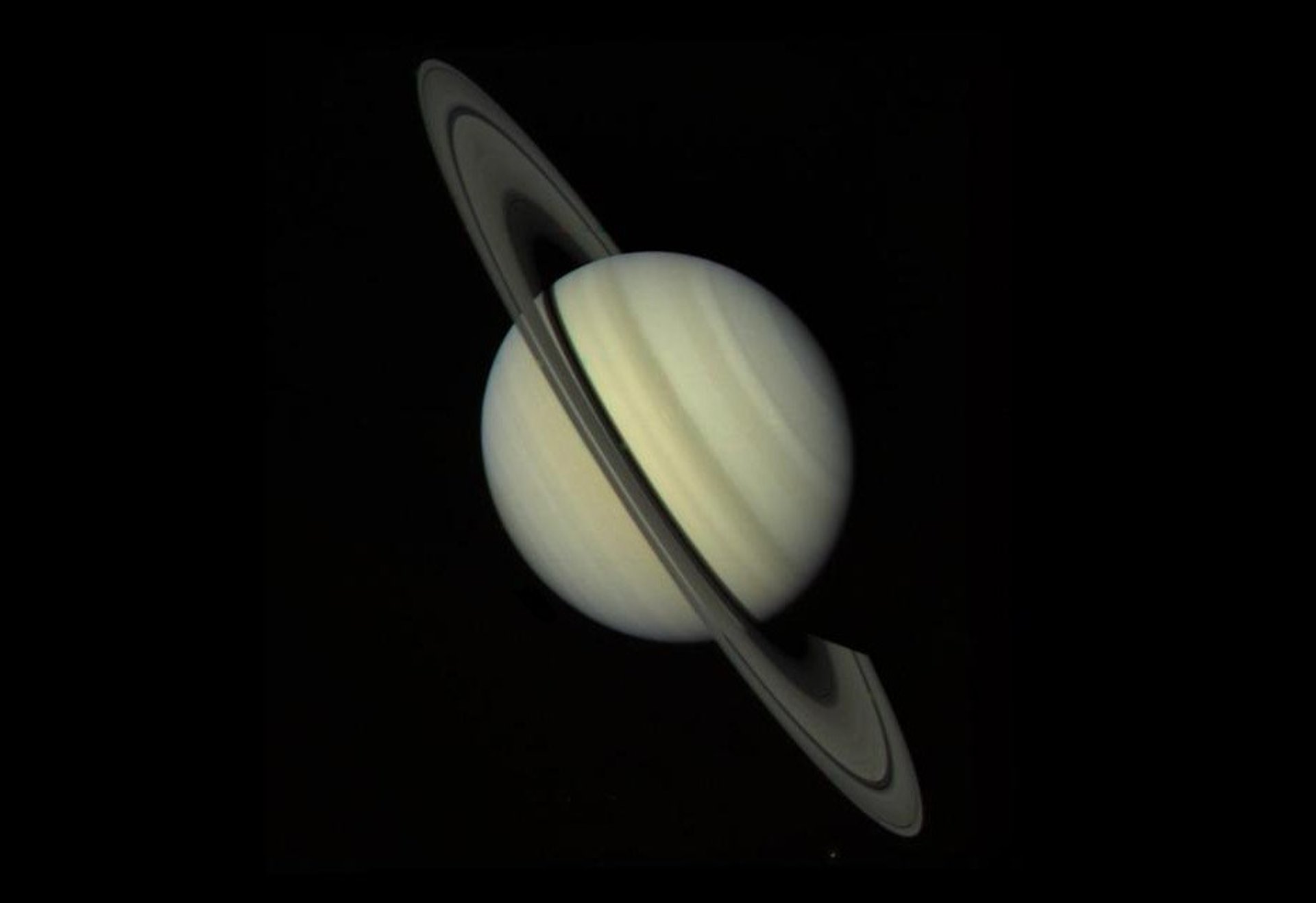
Saturn
Way out beyond Jupiter is the second of the gas giants, Saturn.
When Galileo focused his telescope on Saturn he was puzzled to find that it had an irregular shape. Unfortunately the quality of his telescope meant that Galileo could only guess at what caused this effect. As the quality of telescopes improved later in the century, astronomers were able to solve the puzzle and for the first time see the rings of Saturn.
Saturn is situated in the icy depths of the solar system and the rings consist of ice and ice covered rocks. It is possible that the rings are the remnants of an icy moon that was destroyed by a collision with a comet or they could be the leftovers of the cloud of ice and gas that originally formed Saturn.
Saturn has more moons than any other planet in the solar system. It's largest moon, Titan, is also the only moon in the solar system that has an atmosphere. It is permanently surrounded by orange cloud that releases methane rain onto it's surface.
Observing Saturn
With the unaided eye Saturn appears as a very bright star.
Viewed through a small telescope, Saturn is a gem. Seeing those famous rings for the first time through a telescope is a special experience.
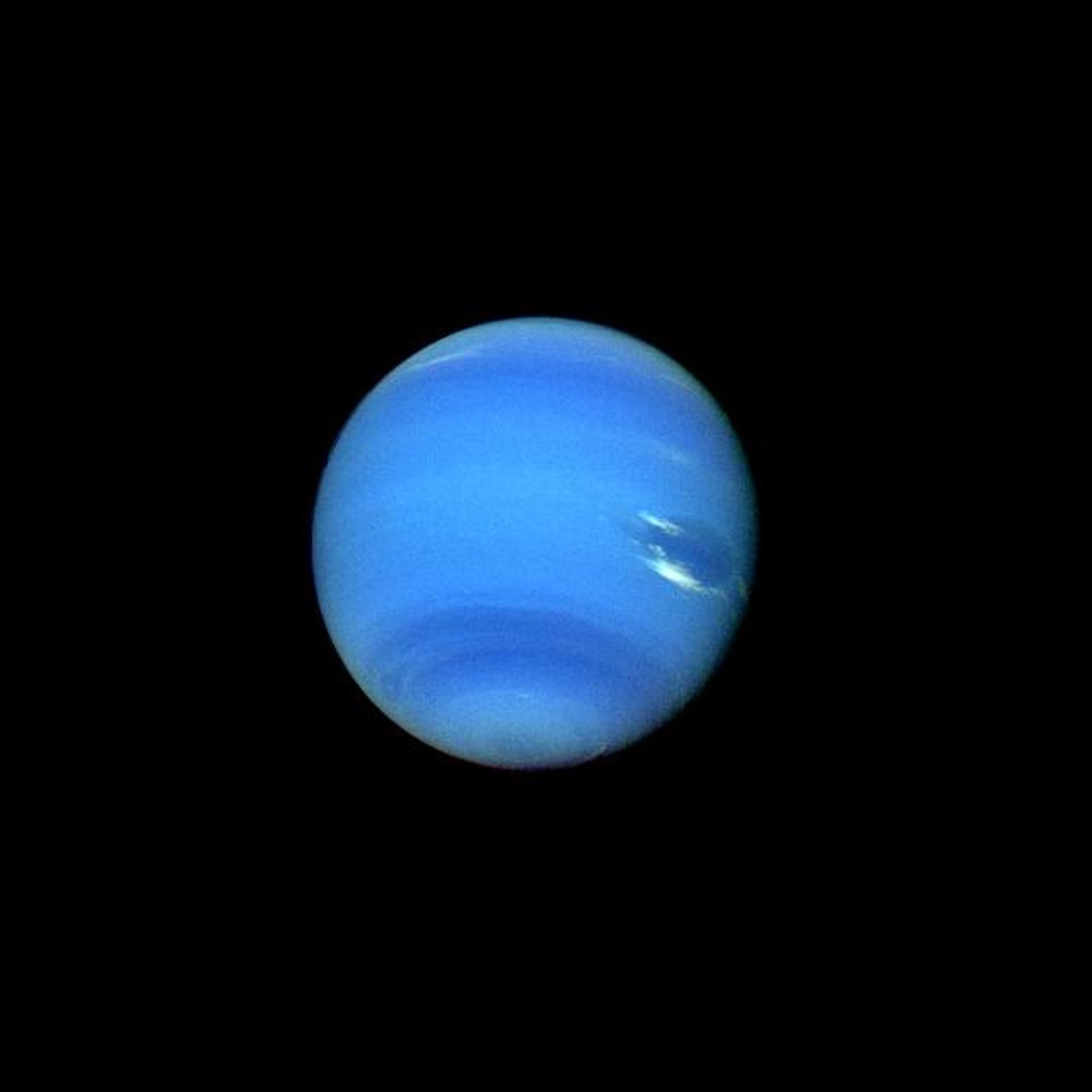
Uranus, Neptune and Pluto
In 1781, William Herschel while viewing the sky from his garden in Bath, England recognized that an object in the constellation of Gemini was moving against the background of stars. At first he thought he was looking at a new comet but upon further investigation realized that he was looking at a new planet.
Herschel named his discovery 'the Georgian planet' after his patron King George III. Other names proposed included Herschel, Uranus or Hypercronius. Eventually Uranus became the universally accepted name.
Uranus is a bluish green gas giant. It takes 84 years to orbit the sun.
Unlike all the other planets Uranus spins on its side. This means that the northern hemisphere of the planet sees the sun continually spinning round in the sky for over 40 years only to be plunged into darkness for 40 more. For the southern hemisphere the seasons are reversed.
Uranus
Neptune
By the early 19th century it became evident that the orbit of Uranus did not follow Newton's law of Gravitation. Many astronomers began to question whether Newton's theory of gravitation applied to an object so far from the sun.
However two astronomers, John Couch Adams in England and Urbain Le Verrier in France, both independently came up with the theory that the orbit of Uranus had been disturbed by a more distant planet.
Working to Le Verrier's calculations, astronomers at the Berlin observatory were able to identify this planet. They had discovered the eighth planet of the solar system, Neptune.
Neptune is a blue (gas giant) planet of similar size to Uranus.
Its colour comes from the methane in its atmosphere. Methane absorbs the longer visible wavelengths (red and yellow) so the reflected sunlight appears blue.
Neptune has a very active atmosphere with high wind speeds that move around the planet faster than it rotates.
Pluto
After the discovery of Neptune, astronomers started to look further into the depths of the solar system for a ninth planet.
In 1930, an American astronomer, Clyde Tombaugh, discovered the last of the known worlds of our solar system, Pluto...... this was until in 2006 the International Astronomy Union decided that Pluto was not a planet. It was just a dwarf planet. To be fair, Pluto was always an anomaly. All the rocky worlds were in the inner solar system and Pluto was a rocky world way out beyond the gas giants. Something was always amiss.
It is now thought that Pluto came from a region of space debris left after the forming of the solar system called the Kuiper Belt.
Pluto is only visible in large telescopes so is beyond the reach of most amateur astronomers.
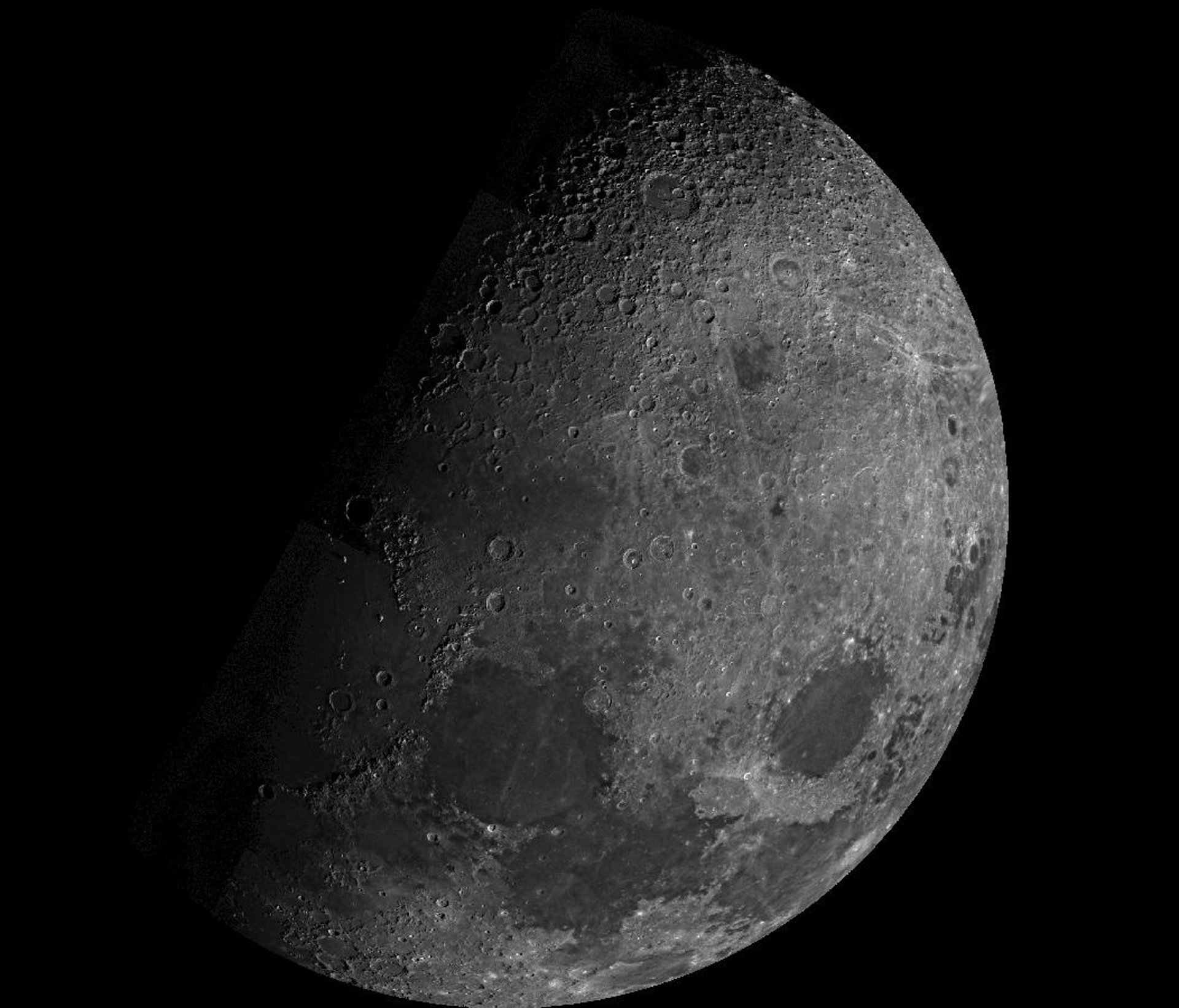
The Moon
Most of the moons found in the solar system are very small in comparison to the planet they orbit. However the earth's moon is large in comparison (about one third the size of the earth) and many astronomers consider the earth-moon system to be a double planet.
The moon orbits the earth every 27.5 days and its rotation time is the same so we always see the same side of the moon facing us. The first time mankind ever got a view of the dark side of the moon was when the Luna 3 space probe sent back photos in 1959.
The moon is so close to us that it even affects the tides on earth. It remains the only celestial body that mankind has ever set foot on apart from our own home planet.
Two types of lunar terrain are clearly visible from earth. The lighter areas are the mountainous regions. These are known as the 'highlands'. The darker areas are the 'mare' regions. These are flat low lying regions. 'Mare' is the latin word for sea and at first it was thought that the darker areas of the surface were lunar oceans. They are actually large basins that filled up with lava which pushed its way to the surface 3 to 4 billion years ago.
Observing The Moon
The moon is a great sight with the naked eye. You can easily make out the lighter highlands from the darker lowland areas.
With binoculars it is spectacular and viewed through a telescope it is absolutely amazing.
I have been observing the moon for over 30 years and every time I view it anew, it is mind blowing. Through the smallest of telescopes there is plenty to see and using a moon map you can start to explore the moon and hop from one feature to another. In all of astronomy this is my favourite thing to do.